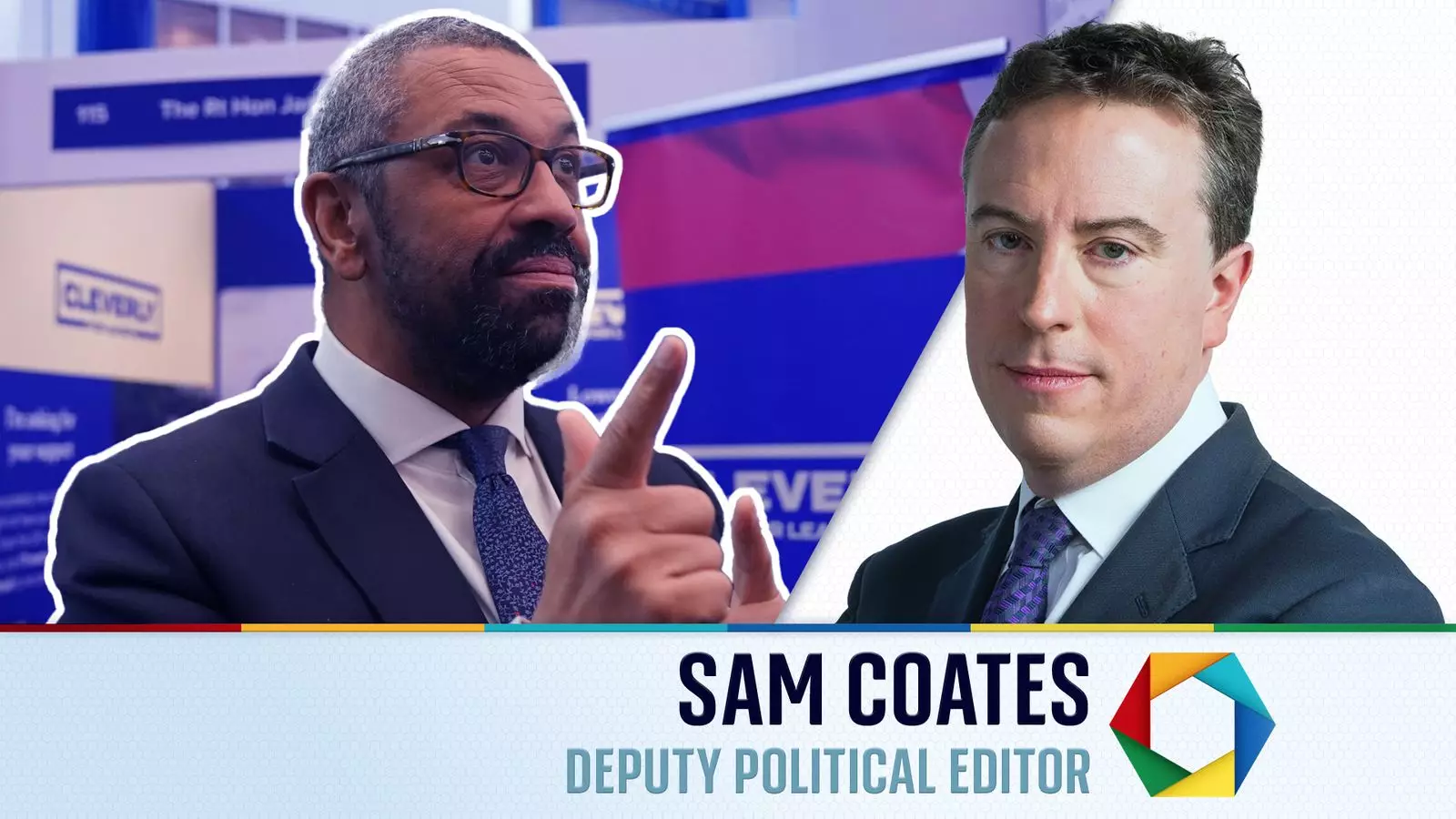The recent developments in the Tory leadership contest have sparked considerable intrigue and speculation among political observers and party members alike. With James Cleverly poised as a frontrunner following a positively received conference speech, the contest continues to reveal underlying tension and strategies among the candidates. This article delves into the recent shifts, the candidates’ strategies, and the sentiments of Tory members, all of which will shape the race moving forward.
James Cleverly’s ascent in the leadership contest has been notable, particularly due to his engaging conference address that resonated well with party members. Unlike his opponents, Cleverly crafted a speech that not only invigorated the audience but also strategically positioned him as a unifying figure within the party. The success of his rhetoric illustrates a keen understanding of the need for cohesion within the Conservative ranks at a time when divisiveness may threaten their political stability. His positioning taps into a broader appeal that seems to transcend faction lines, suggesting that he could potentially consolidate support among various Tory factions.
However, despite this momentum, Cleverly faces the looming reality that success in the contest is not merely a matter of delivering a stellar performance at the conference. The true test lies in his ability to transform this momentum into tangible support as the remaining candidates vie for the final spots. Political ambitions can easily fluctuate, and Cleverly’s current standing does not guarantee his place at the top when the broader membership is consulted.
On the opposite end of the spectrum lies Kemi Badenoch, who is explicitly courting the party’s right flank. Her declaration that “the right of the Conservative Party now needs to coalesce around Kemi” indicates her clear strategy to rally support from those aligned with Robert Jenrick and other right-leaning factions. However, this approach may alienate moderates and one-nation Conservatives, particularly supporters of Tom Tugendhat, who may be discouraged by her sharp pivot towards the right.
Badenoch’s gamble reflects a bold strategy, especially considering historical tensions with certain party factions during the Sunak administration. This invites questions regarding her viability as a candidate who can effectively unify the entirety of the party’s base, which is critical in a contest where diverse factions must find common ground to ensure a robust challenge in the upcoming elections.
Once a formidable contender, Robert Jenrick now appears to be losing momentum, which is putting his campaign under scrutiny. A noted decrease in support – from 33 to 31 MP votes – signals a troubling trend for his campaign. Furthermore, reports from his supporters suggest that expectations for a stronger performance were misguided. Jenrick’s speech at the conference seems to have failed to galvanize his backers, which raises significant concerns about his ability to recover and regain a foothold in this competitive landscape.
As Cleverly gains traction, the question arises whether he could strategically position Jenrick as his main opponent in the concluding rounds of the contest. The YouGov polls suggest that the margins between candidates remain razor-thin, meaning Cleverly might be able to maneuver the contest to his advantage. This level of strategic polling is not unusual in competitive political contexts where positioning can dictate the viability of candidates.
Ultimately, the members’ sentiments play a decisive role in this contest. A recent YouGov poll highlights that integrity, honesty, and adherence to conservative values are paramount for Tory members, with winning elections not being a primary concern for only 2% of respondents. This preference outlines a complex dynamic in which candidates may embody certain ideals that align with party members’ values, rather than simply being marketable for general elections.
As the leadership race unfolds, the extraordinary unpredictability makes it hard to draw definite conclusions. The various pivot points—Cleverly’s rise, Badenoch’s alignment with the right, and Jenrick’s faltering support—illustrate the multifaceted nature of this contest. With the final selection of candidates pending and the ramifications of personal ideologies and public perceptions looming large, the outcomes remain anything but certain. The Tory leadership landscape is one of shifting strategies and evolving alliances—reflective of a party navigating through a tumultuous political period.


Leave a Reply